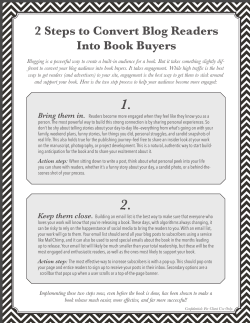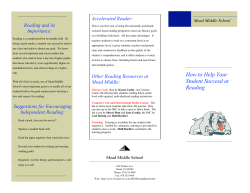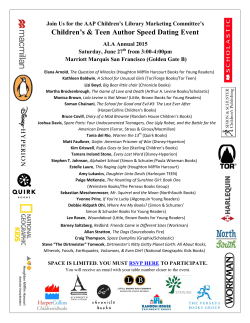
How the High Cost of Medical Care Is Affecting Americans
The San Juan Daily Star December 26-28, 2014 35 HEALTH How the High Cost of Medical Care Is Affecting Americans By ELISABETH ROSENTHAL • A bill of over $40,000 for the 20 minutes it took a doctor to stitch a cut. • An ambulance ride of only 200 feet that cost $3,421. • A healthy, insured couple “slowly going under” because their premiums, co-pays and deductibles are now twice as high as their mortgage and food costs. Over the past two years, the New York Times series Paying Till It Hurts has examined the high costs of ordinary medical care in the United States, exposing the reasons and chronicling the human fallout behind the nation’s extraordinary $2.9 trillion medical bill. In response, more than 10,000 readers shared individual experiences like the ones above. But how does a collection of often heartbreaking, often startling tales reflect national experiences and attitudes? The available data did not answer all of my questions. So, using reader comments as a starting point, The Times designed a questionnaire with CBS News and conducted a national poll this month. Here is a snapshot of the American experience with the cost of medical care. Affording medical care is more of a hardship. Reader comments and emails told of the increasing burden of health care costs on many Americans. T.R. Ellis, a freelancer in New York who has two healthy teenage daughters, wrote that the relentless rise of premiums has forced the family into a high-deductible plan, adding “For the first time, I will be paying medical bills by borrowing against our home.”. The poll bore out readers’ experiences: Nearly half of respondents described the affordability of basic medical care as a hardship for them and their family, up 10 points from a year ago. While the Affordable Care Act has expanded insurance to millions of Americans, including those with existing conditions, it does not directly address cost. And cost is becoming increasingly problematic. Out-of-pocket expenses have gone up. Many readers, even those with good insurance coverage, were surprised by rising out-of-pocket expenses. Tina H. relayed how having her son’s broken arm set in a temporary splint in an emergency room this year “cost us $3,500 out-ofpocket, even with decent insurance.” The poll found that just more than half of Americans say the amount of money they and their family have paid out of pocket for health care and prescription drugs has gone up over the past few years, and about a third of Americans said they have gone up a lot. Why? Partly because newer insurance plans — including policies under the Affordable Care Act — are designed to make sure patients have “more skin in the game,” so they will be more discriminating users of health care. Fixed co- pays, say $20 for a visit to a doctor, are being replaced by requirements that patients contribute a percentage of charges, which often ends up costing them far more. Some Americans are less likely to get treatment because of cost. Many readers wrote that they were avoiding attending to medical conditions or symptoms because they could not afford treatment or were worried about potential costs, even if they had insurance. “My employer-paid plan has a $5K deductible, so I don’t get medical services if I can help it,” said Ed, 61, from Winston-Salem, N.C. “I forgo blood pressure meds and colonoscopy,” he continued, even though his last test found polyps that should be monitored. While the Affordable Care Act mandates the coverage of certain screening services at no cost to patients, any resulting treatment means money out of pocket. Americans wish their doctors would discuss costs. Although doctors in many other countries post price lists in their offices, talking about money upfront is traditionally taboo in American health care, and many readers complained about being unable to discuss the issue with their doctors. Physicians say they are unprepared for the discussion and do not know how much treatments cost anyway, in part because of the uncertainties of insurance reimbursement. But many patients say they need the information in order to manage health expenses. Here is what one reader from Atchison, Kan., had to say: “Even when I have asked a straightforward question like, ‘What is your standard cost for an initial office visit?’ doctor’s offices have simply refused to comment. It is completely impossible for a medical consumer in this country to have any information at all until the bill is received.” Insurance paperwork is a problem for many Americans. As I interviewed patients for the series and requested bills and insurance statements, the burdens created by America’s medical billing system came up again and again. One patient, an attorney, said he had to take three days off from work to navigate bills after a two-day hospital stay. Visiting patients in their homes, I saw shelves containing binders brimming with bills and payment plans after only minor illnesses. One reader, Aaron Bassett of Laconia, N.H., relayed his tradition during his wife’s pregnancy: “Once a week I have to spread out all the bills we’ve received on the dining room table and try to cross reference them with the health insurance paperwork” to determine which ones to pay. Americans are eager for relief. There seems to be widespread agreement that medical prices are burdensome for American patients, and new solutions are needed. But will the answer be a market-based approach involving greater price transparency? More regulation, focusing on price? A government-sponsored single-payer health system, like that in Canada? Or allowing younger people to join Medicare, the popular health insurance program for seniors? Many readers surprised me by saying they could not wait to turn 65. As one reader from Texas said: “I bought medicine in Mexico for 23 years before I became eligible for the promised land of Medicare.”
© Copyright 2025





















